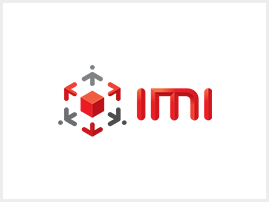An Introduction to the EMS Industry

March 25,2019,Philippines—EMS or electronics manufacturing services, also referred to as ECM or electronics contract manufacturing, are provided by companies that offer designing, manufacture or assembly, and testing of electronic goods and components including printed circuit boards (PCB), switches, semiconductor devices, and complex computer systems. EMS providers also offer assistance with a wide array of value-added services which include supply chain management, configure-to-order, outbound logistics, and repair elements.
Typically, EMS providers are hired as outsource manufacturing partners of original equipment manufacturers or OEMS from diverse markets. These include automotive, industrial, aerospace, and more because of expertise and low cost. In fact, most of today’s electronics—from phones to cars—are manufactured by EMS providers.
History
The EMS industry took off after the first EMS electronic manufacturing company Solectron, now called Flex, was established in 1977 and spearheaded a revolution within the industry by providing outsource manufacturing services to OEMS. Before that, EMS electronics manufacturing and PCB assembly were mostly done by in-house workers.
This business model, which was created to specialize on large economies of scale in manufacturing, raw materials procurement, pooling of resources, and design expertise, enabled great flexibility as well as eased human resources issues, especially for smaller companies.
By early 1990s, the development of Surface Mount Technology or SMT for PCBs allowed a faster assembly of electronics which changed the world of EMS, and by the turn of the 21st century, EMS providers were essentially manufacturing all types of electronic products.
Services
EMS companies offer a wide range of electronics services. They can be contacted either on any phase of the project or for the entirety of it, depending on the customer’s needs.
Design
After determining the customer’s specifications or product needs (and before manufacturing or assembly takes place), EMS companies may first provide a product concept or design which answers to the customer’s product specification and needs. Customers may also present their own design to the EMS company and jump right ahead to manufacturing, but by entrusting the design to the EMS Company, customers may get the benefit of having experts work on their design.
Research on existing related products and interviews of other experts are also parts of this process.
Manufacturing
Next, to visualizing and creating a product design, EMS providers move on to manufacturing, or sometimes, assembly, which is their key competence. They specialize in one of two types of PCB technology which are SMT and THT or Through Hole Technology.
Manufacturing with THT involves inserting components with tails or leads into a hole drilled in the PCB. It creates strong mechanical bonds and has fewer solder issues than SMT, making it extremely reliable. It also allows for easier prototyping and better heat tolerance. However, this process can be more expensive as it requires additional drilling and printing on both sides of the PCB.
On the other hand, manufacturing using SMT mounts or places components directly onto the top surface of PCBs. The SMT components are usually smaller and less expensive than THT components, and as said earlier, this method allows faster production. However, it requires a more advanced level of design, production, skill, and technology than THT.
Testing
In order to ensure that the electronic product has met the customer’s requirements as well as passed the quality standards, testing is necessary after manufacturing. It can be performed in two different levels which are PCB level and product level.
In PCB level testing, electrical testing is done to see if the ICs or integrated circuits are operating well. Meanwhile, product level testing is where a product will be tested as if it were actually to be used by actual users.
In short, EMS providers are mainly focused on creating electronic products, but they are more than just manufacturers—they are also the biggest influencers in society and our future.
Other Blog

